
Bursting forth into color and sweet scents, there is nothing that truly beautifies a garden quite like flowering shrubs. A dabble of daisies, a bed of roses, and a line of lilies may pepper your greenery with some sparks of prettiness. However, if you want to really unleash the rainbow, what your garden needs are bushes like these blooming delights. The best part of maintaining flowering shrubs is that their flowers blossom on old wood, which are the branches from previous years, as well as new wood, which are the newly grown branches. Come the blooming season, these bushes are bathed in painted flowers from end to end. These 20 common bushes are the ultimate addition to your colorful collection of plant life.
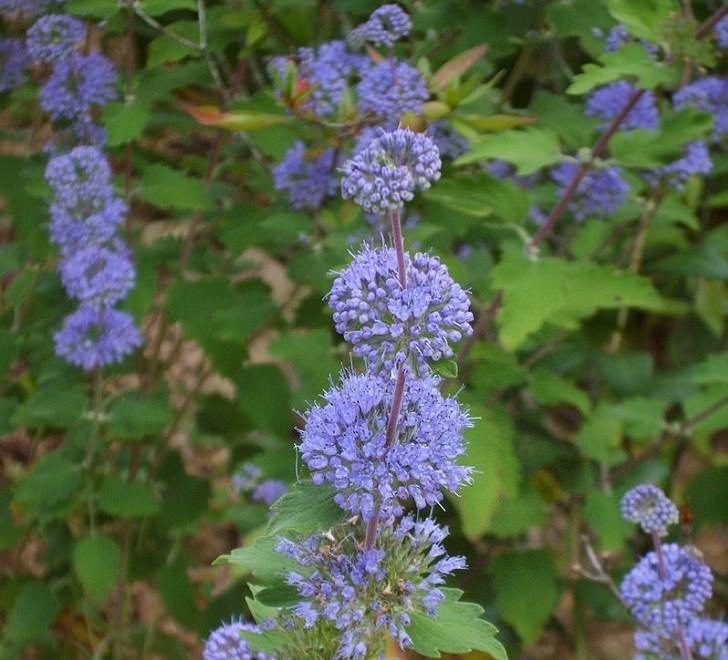
(By Dalgial, Wikimedia Commons)
This herbaceous shrub is also known as Bluebeard after its luscious hue. They grow between 1 and 3 meters in length. The best place to plant this shrub is in full sun and mineral-rich soil. Plant them in fall or spring and watch these blue wonders bloom from August all the way through to October.
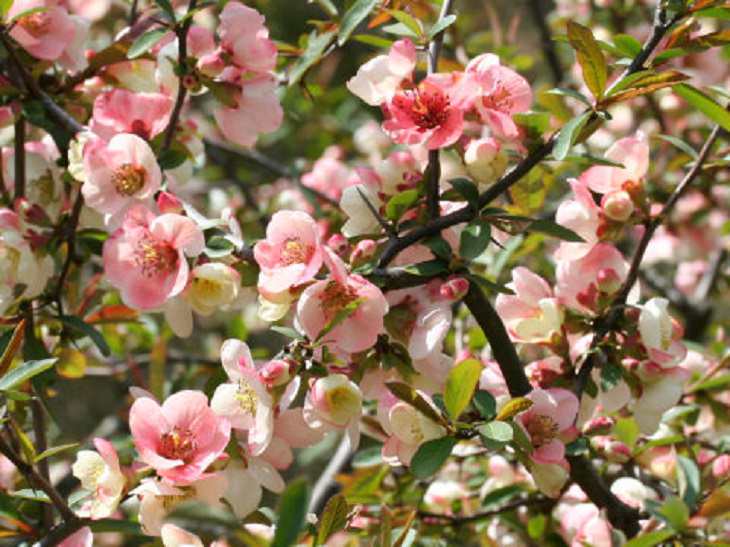
(By Shu Suehiro, Wikimedia Commons)
This scrappy shrub also goes by the name Quince and is a deciduous spiny shrub. Much like the Caryopteris, it is native to Southeast Asia, though it can be found in gardens across the world. It requires well-drained soil and is extremely tolerant of full or partial shade. The pink and red flowers bloom in spring and in summer, this thorny tree also bears small fruits that can be used in jams and jellies.
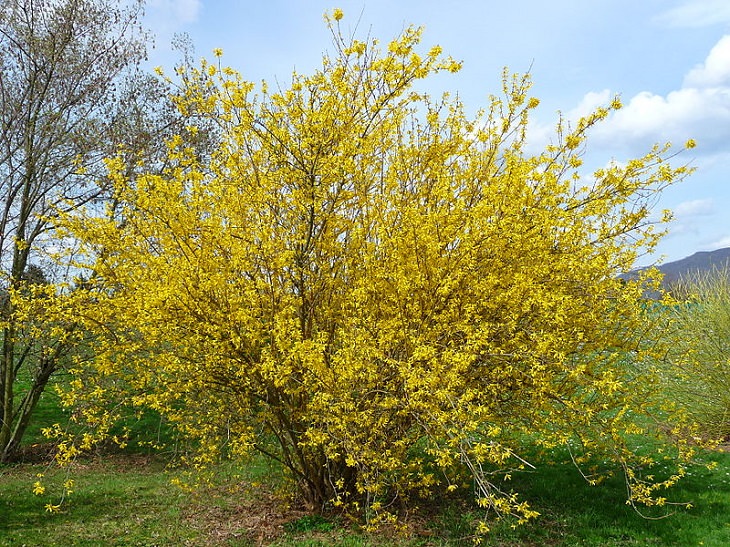
(By 4028mdk09, Wikimedia Commons)
Throw some more sunshine into the mix with this yellow dream. At the start of spring, the first flowers to bloom are always those of the Forsythia. This plant needs plenty of sun, a minimum of 6 hours. The more sun it gets, the more flowers bloom! The growth of the shrub itself can be hindered if not kept in well-drained soil that is high in organic matter. They can tolerate long periods of reduced watering and require only 2 inches of water a week.
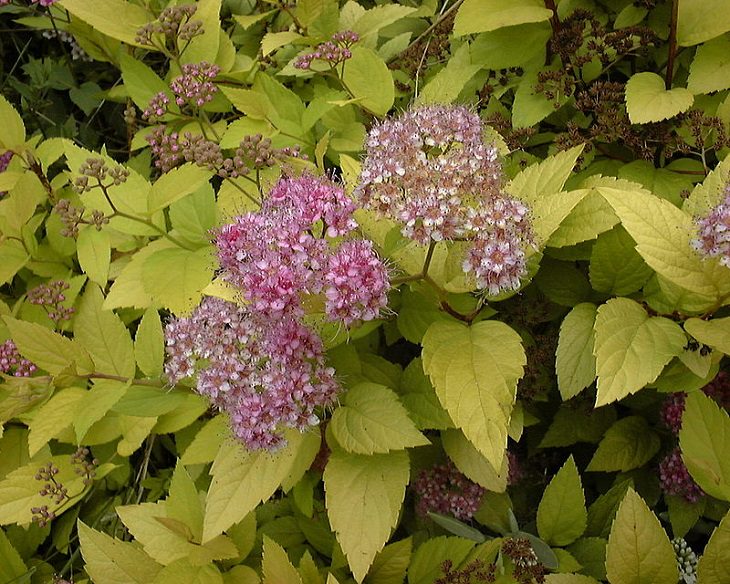
(By Alan Pascoe, Wikimedia Commons)
These are hardy deciduous shrubs with narrow oval-shaped leaves. They can grow up to 2 meters in length and width. This shrub, much like Forsythia, requires a lot of sunlight, as well as well-drained, slightly acidic soil. The flowers are fragrant and come in white, red, and pink. The flowers are of two types typically, spring bloomers and summer bloomers, blossoming early in the respective season.
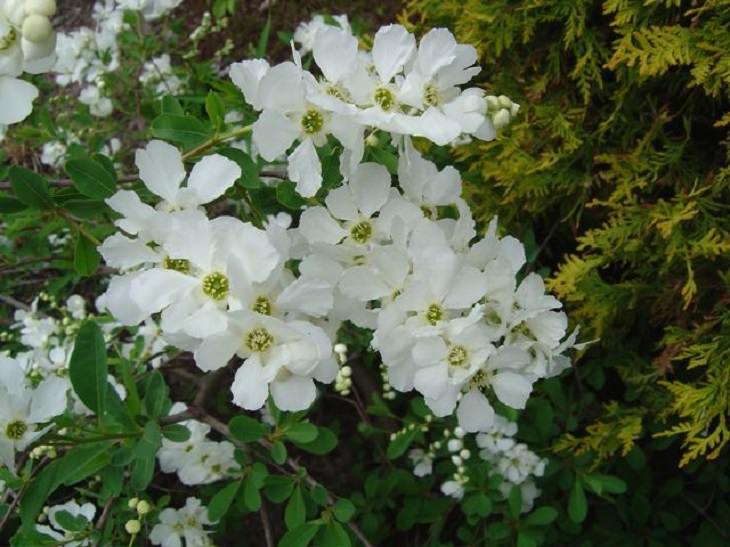
(By Nadiatalent, Wikimedia Commons)
This beauty goes by the common name the Pearl bush, largely because of the beautiful pearly white flowers that bloom on its branches. This plant grows tall, upwards of 2 meters, and requires alkaline soil. While they grow well in full sun, they also thrive in partial sun and can survive occasional droughts. The small white flowers of this bush usually grow in clusters.
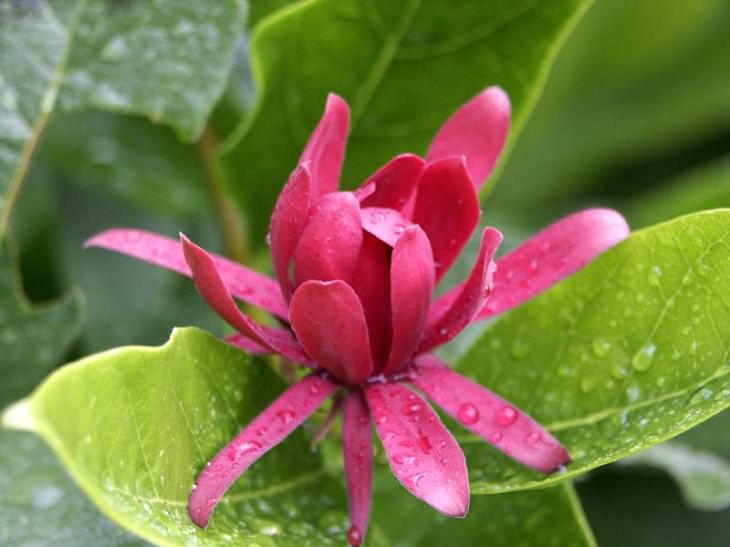
(By Scott, Wikimedia Commons)
This flowering deciduous shrub also goes by the name Sweetshrub, due to a variety of smells emitted by this plant. The bark of the shrub has a distinct camphor-like smell, while the flowers themselves have a sweeter fragrance. This plant needs even sums of full sun, partial sun, and full shade to truly thrive. They are quite tolerant of a variety of soils though nutrient-rich soils are most effective. The deep red flowers bloom throughout the summer.
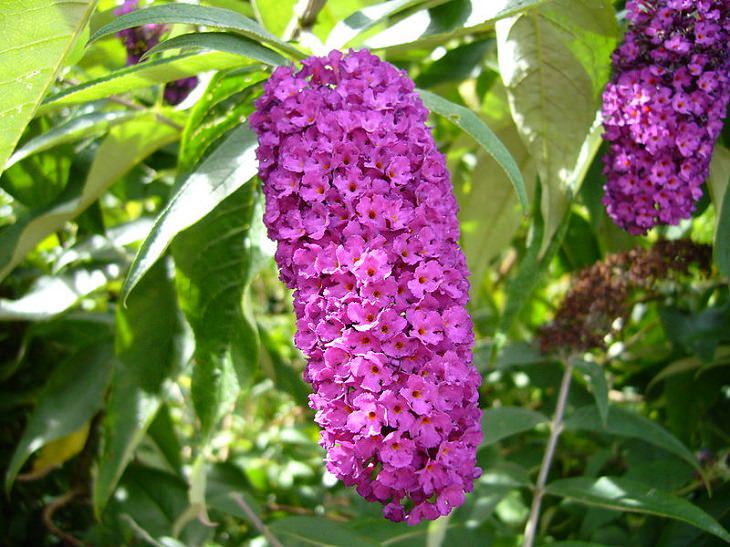
(By Nabokov, Wikimedia Commons)
This ornamental shrub, native to certain parts of central China and Japan, has been accorded both the Royal Horticulture Society Award of Merit and the Award of Garden Merit. It also goes by the names butterfly bush, Orange eye, and summer lilac. They require full sun, a minimum of 6 hours a day, and preferably lean soils high in alkaline content. They can be extremely vulnerable to cold climates, however, they are thoroughly pollution-resistant. Their sweet fragrance usually attracts butterflies, contributing to its common name.

(By Eric Hunt, Wikimedia Commons)
The Ninebark is an extremely versatile shrub bearing the scientific name Physocarpus opulifolius. It holds dark red and brown leaves, and its bark is thin and layered, peeling off into multiple layers as the plant ages, usually nine layers, which is where this shrub gets its common name from. This plant requires clay and loamy soil and grows best in full sun, though it also requires partial shade. The beautiful white and pink flowers grow in clusters throughout spring.
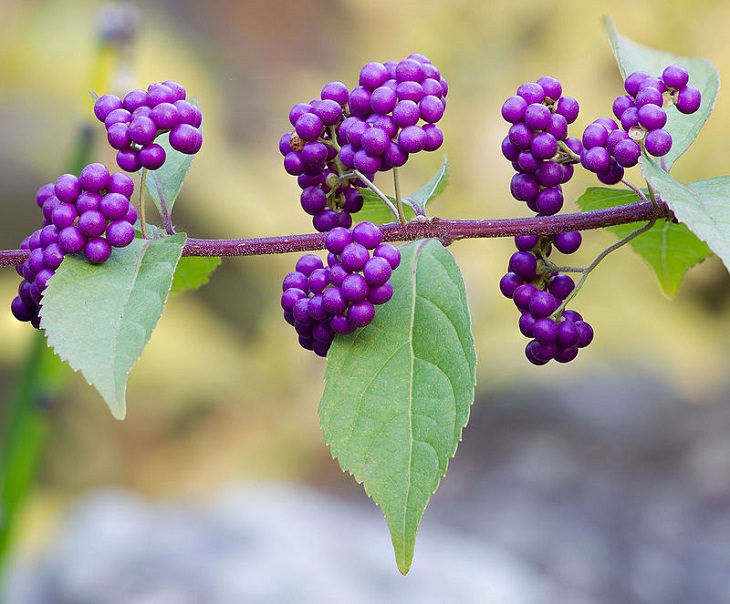
(By Laitche, Wikimedia Commons)
This plant, also known as the beautyberry, is found all across the world, spanning across Asia, Australia, Madagascar, and North and South America. It is recognized by the cluster of purple berries that bloom on its branches. There berries last during winter and summer seasons and provide much-needed food for birds during times of scarcity. They require well-drained soils but can tolerate a variety. They can bloom in light to moderate shade but for best flower and berry growth, full sun is a must.

(By Rufino Osorio, Wikimedia Commons)
The Buttonbush is a shrub native to the United States, and it is considered a four-season shrub. Unlike most other shrubs, this plant grows best in wet soils and rainy conditions, thereby making it perfect for a rain garden or planting near a pond. This plant can tolerate deep waters, as deep as 3 feet. While full sun is the best for this plant to grow to its fullest, it is tolerant to partial sun and partial shade as well.
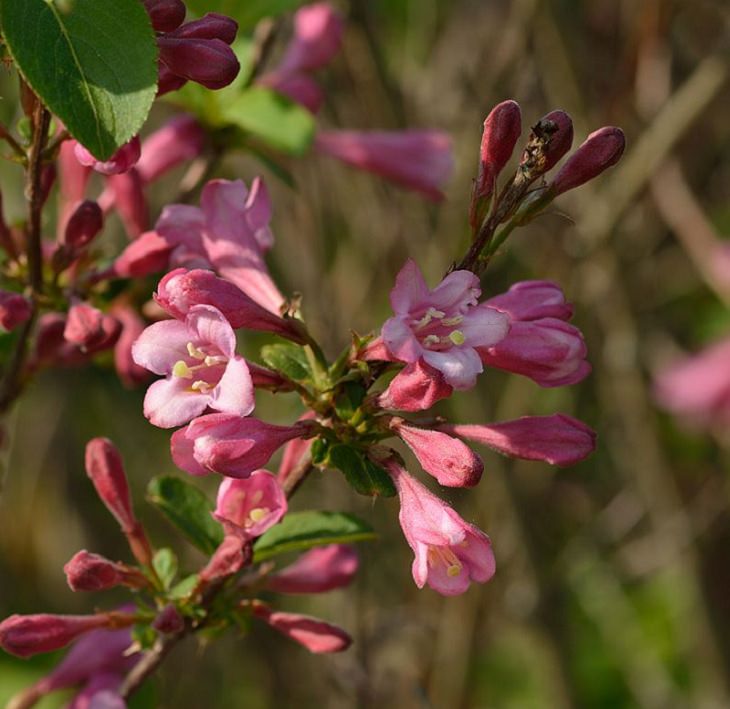
(By Ivar Leidus, Wikimedia Commons)
There are nearly 40 different species of deciduous shrub under this genus, each as beautiful as the last. The genus itself was named after a German scientist named Christian Ehrenfried Weigel. Their flowers are usually white and pink, with lobed petals. They are native to various regions in Asia, though they were imported to England in the mid-19th century. Their seeds play a role as food for the larvae of different species of moths and butterflies. It requires light shade and well-drained soil.
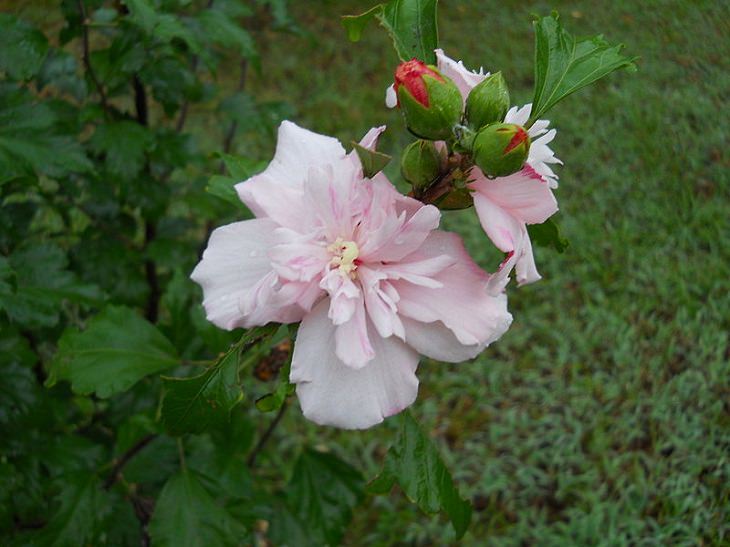
(By HIM Nguyen, Wikimedia Commons)
The Rose of Sharon is a common name for a variety of hibiscus plants and flowering shrubs that come in any number of colors, including lavender, red, pink, white and even light blue. Unlike most other shrubs, it blooms at a relatively late period, usually in August. It is a deciduous shrub, requiring full sun, part sun, and partial shade as well as acidic or slightly alkaline soil.